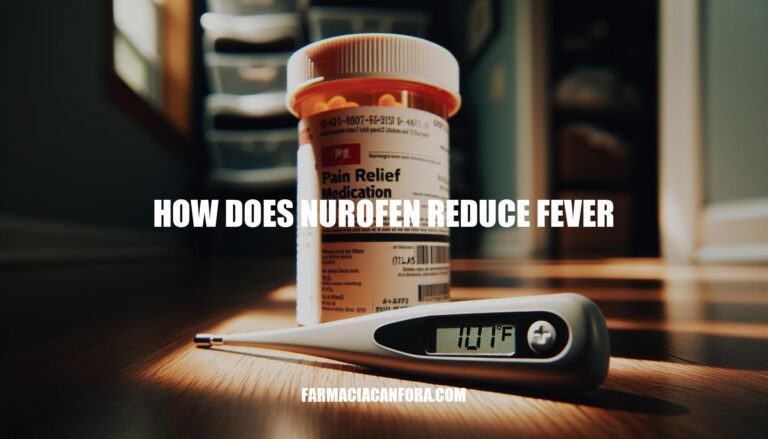


Nurofen, containing ibuprofen, is a widely used medication for reducing fever. It works by inhibiting the enzyme cyclooxygenase (COX), which plays a key role in the production of prostaglandins. Prostaglandins are substances in the body that cause inflammation, pain, and fever. By reducing their production, ibuprofen-reduce-fever”>Nurofen effectively lowers body temperature and alleviates fever symptoms.
Nurofen, which contains ibuprofen, reduces fever by inhibiting the production of prostaglandins. Prostaglandins are chemicals in the body that cause fever and inflammation. By blocking the enzyme cyclooxygenase (COX), which is necessary for prostaglandin synthesis, Nurofen effectively lowers fever and reduces inflammation.
The active ingredient in Nurofen is ibuprofen. Ibuprofen is a non-steroidal anti-inflammatory drug (NSAID) that works by inhibiting the enzyme cyclooxygenase (COX), which is involved in the synthesis of prostaglandins. Prostaglandins are lipid compounds that play a key role in inflammation and fever.
When you have a fever, your body produces more prostaglandins, which act on the hypothalamus (the part of the brain that regulates body temperature) to increase your body temperature. By inhibiting COX enzymes, ibuprofen reduces the production of prostaglandins, thereby lowering the hypothalamic set point and reducing fever.
Here are the recommended dosages and administration guidelines for Nurofen (ibuprofen) to reduce fever:
Always administer Nurofen with food or milk to minimize stomach upset, and consult a healthcare professional before use, especially for children under 6 months or if you have any underlying health conditions.
Nurofen, which contains ibuprofen, is effective in reducing fever. Clinical studies have shown that ibuprofen is slightly more effective than paracetamol in reducing fever in children. For instance, a study published in the BMJ found that ibuprofen alone was effective in reducing fever and fever-associated discomfort in children. Another systematic review indicated that while ibuprofen was marginally more effective, both ibuprofen and paracetamol are generally effective in managing fever.
User testimonials often reflect these findings, with many parents and caregivers reporting that Nurofen helps reduce fever quickly and effectively in their children. However, individual experiences can vary, and some users may prefer paracetamol or a combination of both medications for optimal results.
Nurofen (Ibuprofen) is commonly used to reduce fever. Here’s a brief outline of its safety profile:
Always follow the dosage instructions and consult a healthcare professional if you have any concerns.
Nurofen, containing ibuprofen, is an effective medication for reducing fever by inhibiting the production of prostaglandins, which are substances in the body that cause inflammation and pain.
By blocking the enzyme cyclooxygenase (COX), Nurofen effectively lowers body temperature and alleviates fever symptoms. It works by lowering the hypothalamic set point, which regulates body temperature.
The recommended dosages vary depending on age, with adults taking 200-400 mg every 4-6 hours and children receiving 5-10 mg/kg of body weight every 6-8 hours.
Nurofen is generally safe but may cause gastrointestinal issues, allergic reactions, dizziness, and headaches as common side effects. It’s essential to follow the dosage instructions and consult a healthcare professional if you have any concerns or underlying health conditions.